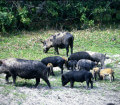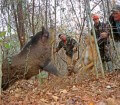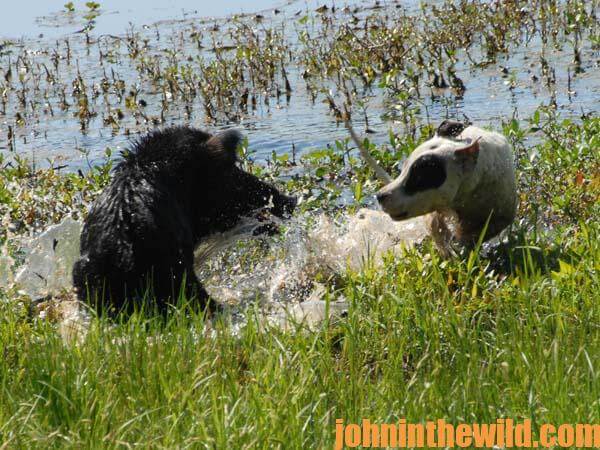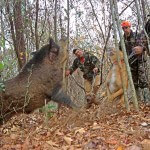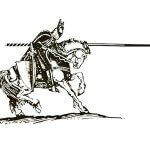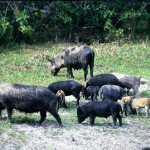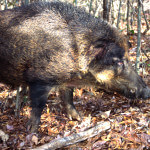John’s Note: Hunting savage wild hogs with a spear is a dangerous sport and has a history almost as old as mankind itself.
We hunted hard the first day of my wild boar hunt in South Carolina, but we couldn’t find a hog.
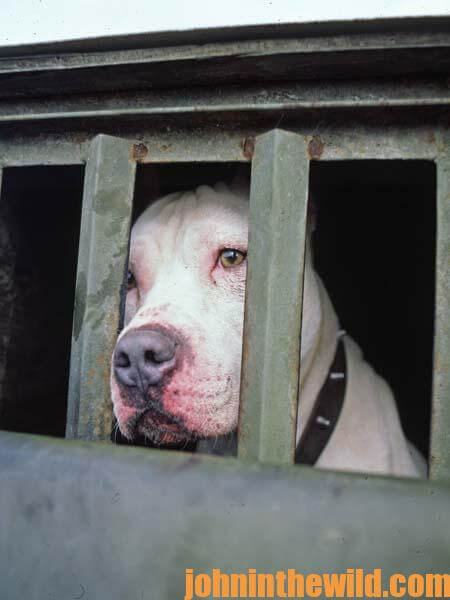 Our guide came down with the flu and was unable to hunt the second day. “Vince Helmly of Savannah, Georgia, is as tough a hog hunter as there is in South Carolina and Georgia,” my friend Joel Homansky informed me when he learned we had failed to find any animals. “Vince has a good pack of dogs and knows about hogs. If anybody can help you take a wild pig with a spear, Vince is the man. I’ll call him and see if he will help.” Helmly agreed to come, but when he discovered our method of hunting, he gazed at me with a look that said, “What kind of nut is this guy?” I explained that in no way did I want to endanger my life, his life, the lives or limbs of anyone in our hunting party or the dogs. “If and when we capture a wild boar,” I told him, “You will be the one to make the decision as to how we will take the hog, so everyone is protected.” With that assurance, Helmly agreed to lead our expedition into the Savannah River Swamp.
Our guide came down with the flu and was unable to hunt the second day. “Vince Helmly of Savannah, Georgia, is as tough a hog hunter as there is in South Carolina and Georgia,” my friend Joel Homansky informed me when he learned we had failed to find any animals. “Vince has a good pack of dogs and knows about hogs. If anybody can help you take a wild pig with a spear, Vince is the man. I’ll call him and see if he will help.” Helmly agreed to come, but when he discovered our method of hunting, he gazed at me with a look that said, “What kind of nut is this guy?” I explained that in no way did I want to endanger my life, his life, the lives or limbs of anyone in our hunting party or the dogs. “If and when we capture a wild boar,” I told him, “You will be the one to make the decision as to how we will take the hog, so everyone is protected.” With that assurance, Helmly agreed to lead our expedition into the Savannah River Swamp.
Hunting for wild hogs there is not for the faint hearted. Within the first 30 minutes, we had waded one thigh-high creek, crawled through three briar patches and been beaten by one cane thicket, all of which were terrain that swamp boars called home. Because of the thickness of the cover, I realized that wielding the spear might be difficult, but my faith was in Helmly and his experience and the courage of his hounds. Our party was also relying heavily on other outdoorsmen’s knowledge of the Savannah River Swamp and their years of hog hunting and catching experiences. I also learned that a compass and a hand-held GPS were essential to keep from getting lost in these thickly-brushed areas and also to keep track of the direction the wild pig was heading.
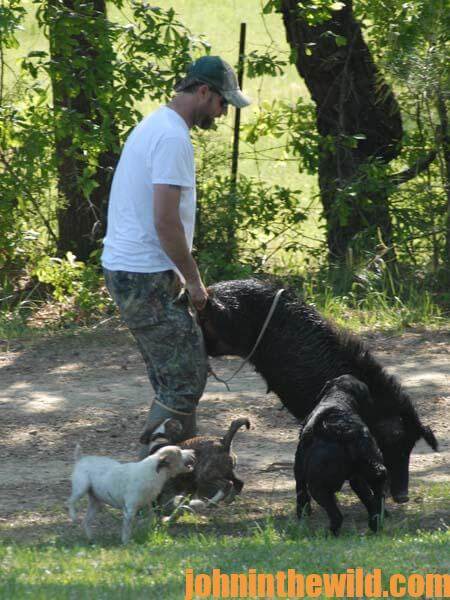 Since there is no closed season on feral pigs in South Carolina, sportsmen hunt wild hogs with hounds in the Savannah River Swamp year-round. The traditional method of taking a hog is to chase it. When the dogs bay the pig, the guide usually moves quickly and deliberately behind the hog and grabs it by its hind legs, throwing it to the ground. The hunter then goes in quickly with a knife with at least a 5-inch blade and made of heavy enough metal to put a hog down. He grabs the pig’s front legs, rolls the animal over and blades the tusker between the forelegs. Another technique sometimes utilized is to come in behind the guide and take the boar with a handgun.
Since there is no closed season on feral pigs in South Carolina, sportsmen hunt wild hogs with hounds in the Savannah River Swamp year-round. The traditional method of taking a hog is to chase it. When the dogs bay the pig, the guide usually moves quickly and deliberately behind the hog and grabs it by its hind legs, throwing it to the ground. The hunter then goes in quickly with a knife with at least a 5-inch blade and made of heavy enough metal to put a hog down. He grabs the pig’s front legs, rolls the animal over and blades the tusker between the forelegs. Another technique sometimes utilized is to come in behind the guide and take the boar with a handgun.
If the hog is not trophy quality, the guide often will throw it to its back, drag it close to a big tree with low limbs and release it, while the guide quickly jumps into the tree and the hunters stand behind the barking dogs. But if farmers’ crops are being destroyed by feral hogs, a hog catcher like Helmly will be called in to help. Instead of killing the hog, it may be thrown, tied and carried out of the woods either to market or to be released somewhere that provides sport hog hunting.
We had been hunting for about 3 hours that day when we heard the bay dogs bark as they ran through the bushes and brambles.
The foot race toward danger was on as we heard the squealing and grunting of a wild pig. When we arrived at the scene, the catch dog, a 60-pound bulldog, was turned loose. The dog went in quickly and deliberately, grabbed the pig’s ear and held on while Helmly circled the animal, grabbed the hog’s hind legs and threw it to the ground.
“This is only a 50-pound sow – not what I think you want to spear,” Helmly commented. “She’ll be good breeding stock. So, why don’t we take her on back and turn her loose later?” After the hog was tied up, Helmly lifted the screaming sow onto his shoulders and carried her out to an old woods road where a four-wheel drive vehicle waited to carry the animal out of the swamp.
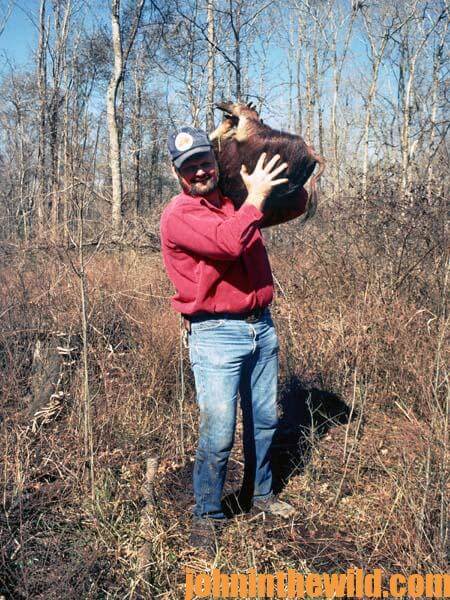 To learn more about all types of outdoor adventures, click here to get John E. Phillips’ print and Kindle books.
To learn more about all types of outdoor adventures, click here to get John E. Phillips’ print and Kindle books.

